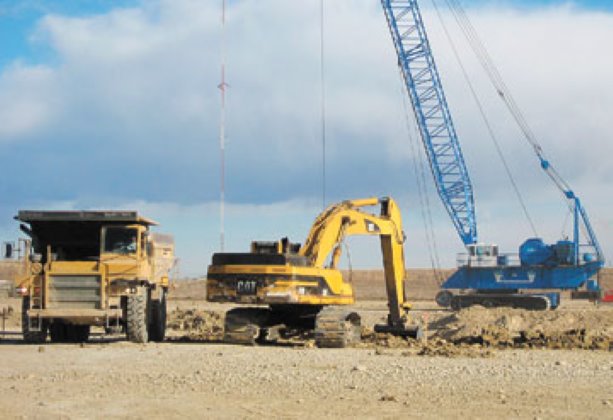The first fully automated concrete pipe plant in Western Canada was built in Calgary using dynamic compaction and includes environmental engineering solutions, such as water- and vapour-management systems.
Environmental engineering
The first fully automated concrete pipe plant in Western Canada was built in Calgary using dynamic compaction and includes environmental engineering solutions, such as water- and vapour-management systems.
Inland Pipe opened the production facility in Northwest Calgary to manufacture reinforced concrete pipe and manholes late last year.
Construction of a new building was challenging because it is located in Spyhill, a mined area of Inland Aggregates’ gravel pit.
“The area the plant was built on had been used for an aggregates business and was located on 30 metres of overburden,” said Ryan Riddell, project manager with industrial site developer Idea Group.
“When they put back the fill for the aggregate, they did not fill the pit with the intention of building later. If they had known there would be a building there they would have done it differently.”
The 30 metres of fill wasn’t compacted and this was a serious problem for the construction of an 84,000 square-foot-structure.
Group 2 Architects, CANA Management and the engineers involved in the project came up with a solution called dynamic compaction.
“That method (dynamic compaction) saved the remediation of the site by allowing the unacceptable fill to be used,” said Joseph Yonan, project manager with EBA Engineering Consultants Ltd (EBA).
“We saved lots of material from having to be removed and taken away, as well as bringing in new suitable material. We also saved money and time, which is environmentally friendly, because we left everything where it is.”
According to Riddel, the process of dynamic compaction involves the creation of a two-metre-deep floating slab.
Large craters are created as a weight is dropped on the unprocessed pit run — the rock that is produced after blasting. The weight is dropped in the same place eight times.
The slab is composed of unprocessed pit run, which is the rock that is produced after blasting, but has not yet been processed or screened.
The unprocessed pit run is compacted using a crane that drops a 30-tonne weight from a height of 30 to 40 feet.
It is dropped in the same place eight times and then moved slightly so there is some overlap.
The process is repeated using a lighter weight with a much larger circumference.
“We used dynamic compaction to improve the density of the soil and because there was a lot of organic material in the fill,” said Yonan.
“We also had to have a risk management plan, which included a methane barrier and extraction system. Under the barrier we put gravel and pipes to collect methane.”
The passive system, which is a precautionary measure, is designed to take potential methane, from the ground, and release it into the atmosphere. This will prevent methane from seeping into the building.
“Another interesting part of the job is a stormwater pond that is connected to a separate lower pond for the processing of pit run,” said Riddell.
“The water is pulled out of the storm pond for the process of washing the pit run. This was Inland’s innovative idea, but we made it work.”
The use of stormwater for Inland’s processing plant is a measure that is designed to save water.
This plant, which was built in 18 months, contains 930 tonnes of structural steel and 6,300 cubic metres of concrete.
The technology includes pipe and manhole machines and concrete batching systems which are interconnected with a hydraulic moving floor and computerized robotic lifting mechanism.
The building houses a batch plant where the dry concrete is mixed to strict computer-regulated guidelines.
The massive bins hold 200 tonnes of cement and 400 tonnes of aggregate. The mix is delivered automatically by overhead buckets to either the manhole or pipe machines.
The Hawkeye machine makes the 48-inch manholes that are manufactured complete with metal steps for climbing below ground level. The machine has a capacity of producing 20 manholes per hour.
The pipe plant receives the mix directly into moulds that have been fitted with steel reinforcing cages manufactured in another area of the plant on two large automatic machines.
Another important part of the design is the robotic moving floor system that transports the product into 60 C kilns for an eight-hour drying time.
The plant produces reinforced pipe from 12 to 60 inches in diameter and will provide product to Alberta and Saskatchewan.











Recent Comments
comments for this post are closed